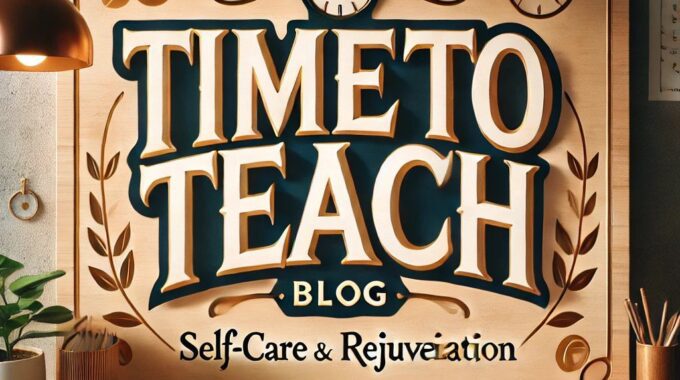As we turn the corner into spring, it’s the perfect time to refresh our teaching…
2020 Vision (revisited)
We believe in thanking our sources! This post was sourced from the following blog/website: http://feedproxy.google.com/~r/dangerouslyirrelevant/~3/SZz0iHPYsxQ/2020-vision-revisited.html
The following is a new blog post related to education and teaching and relevant to our website visitors. The blog post is not based on the opinions or values of our company but is related to education and teaching, so we wanted to share it with YOU! If you ever have any questions please let us know. Now… on to the post!
 Since it’s now 2020, I thought it would be fun to revisit Karl Fisch’s video from 2006, titled 2020 Vision. In that video, Karl imagines he is the commencement speaker for the Arapahoe High School (AHS) Class of 2020, reflecting back on the past 13 years of schooling for that cohort.
Since it’s now 2020, I thought it would be fun to revisit Karl Fisch’s video from 2006, titled 2020 Vision. In that video, Karl imagines he is the commencement speaker for the Arapahoe High School (AHS) Class of 2020, reflecting back on the past 13 years of schooling for that cohort.
In the video, Karl envisioned a number of possibilities:
- AHS launches a 21st century learning initiative that is focused on preparing learners, workers, and successful contributors to the global community.
- Google buys Logitech and a whole host of media companies and university lectures. AHS eventually buys a ceiling-mounted ‘GCam’ for every classroom, which captures video, sound (through an area microphone), and screen capture into unified ‘GCasts’ that can be uploaded to the AHS Learning Management System, which also contains RSS feeds, blogs, and Google Docs-like environments for every course.
- AHS launches its ‘Warrior Portal,’ which eliminates grades and transcripts, allows for more-personalized learning pathways, and creates academic/work portfolios for every student.
- AHS students each have their own laptop and routinely engage in tele-learning with 10 sister schools all around the world.
- Google buys Ford, Apple, and AMD, allowing it to make breakthroughs in solar energy, battery technology, and quantum computing. ‘Google Panels’ replace 2/3 of worldwide energy production. ‘GCars’ travel 1,200 miles on a single charge and are essentially free transportation for homes with Google shingles or roof panels. The GCars also are WiFi access points, creating massive nationwide mesh networks. Google makes the first quantum laptops available for an inexpensive subscription to ‘Google Premium,’ which allows free learning (and shopping) for every laptop owner.
- AHS and Arapahoe Community College merge to become Arapahoe Community School (ACS), a partnership that results in every student graduating with a minimum of 2 years of college credit.
- ‘Google U’ launches, incorporating elements of Google Premium, GCasts, university/library materials, Internet resources, and classroom tools, allowing ACS to dump its own courses and create true individualized pathways for students that allow them to both master essential learnings (competency-based education) and engage in passion-based learning projects.
- By 2020, Google has created an eyeMAGINE computer that projects a 56-inch screen onto users’ retinas, global energy consumption has actually decreased, and ACS has grown to over 20,000 students, all of whom are empowered to “Change the World” (which has been the AHS / ACS motto throughout).
It was fascinating to see some of Karl’s projections from 2006. Today we see a number of dual enrollment programs, for example, and secondary students in P-Tech programs, the Bard Early Colleges, and other initiatives are graduating with college credits. We also have seen some progress related to retinal projection systems, electric cars, solar energy, battery technologies, quantum computing, and other fronts. Many states and school systems are implementing competency-based education (CBE) frameworks and project- / inquiry-based learning initiatives, and 1:1 computing is increasingly prevalent in our elementary and secondary schools.
Today we also see greater skepticism toward Google than many of us had back in 2006. We are not as far along as we could be on the solar energy and electric vehicle fronts, which speaks to both societal inertia and entrenched resistance from companies, politicians, and other major economic actors. AHS is still AHS and, like most other schools, is still trying to figure out its place in a global innovation society. And, as Audrey Watters just reminded us, we have hundreds and maybe thousands of educational initiatives that occupy the graveyard of bad ideas and poor implementation.
What visions for learning from earlier in this century still resonate with you? What progress have we seen (or not)?
Time To Teach reviews each blog post by our contributors but if you feel this is a blog post better suited for another page please let us know.
Teachers and Educators are our heroes. We want to thank you for the work you do!
Yours In Education!
Time To Teach

